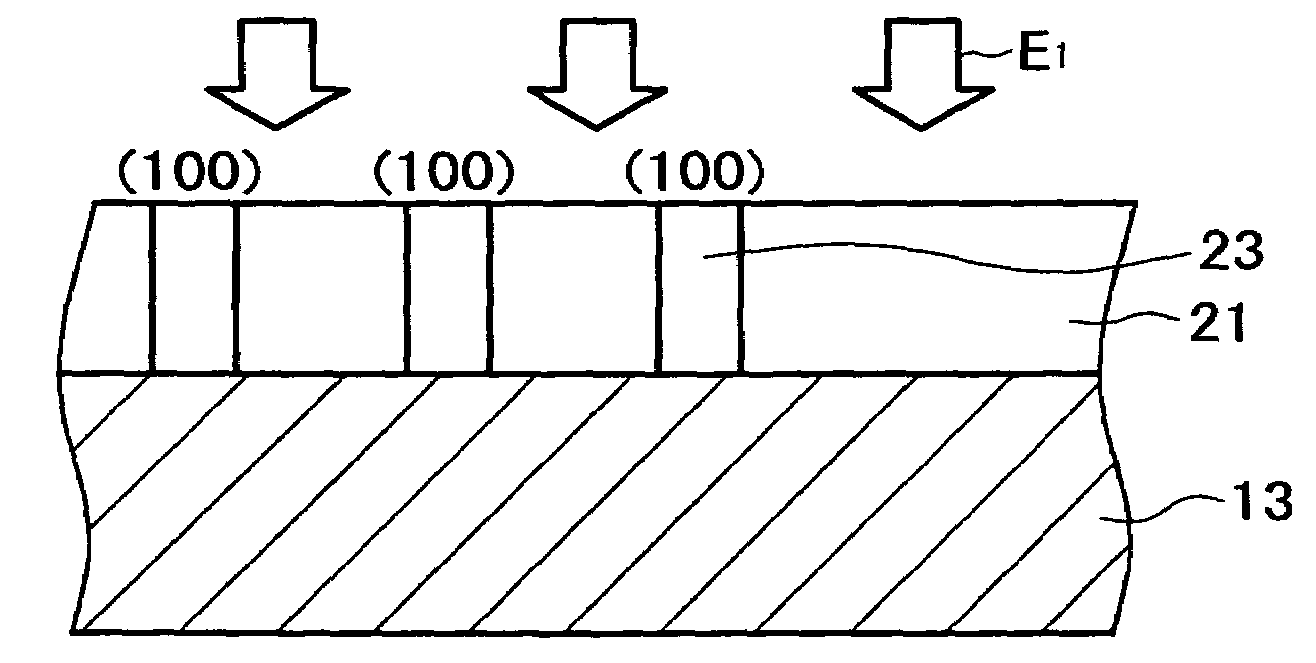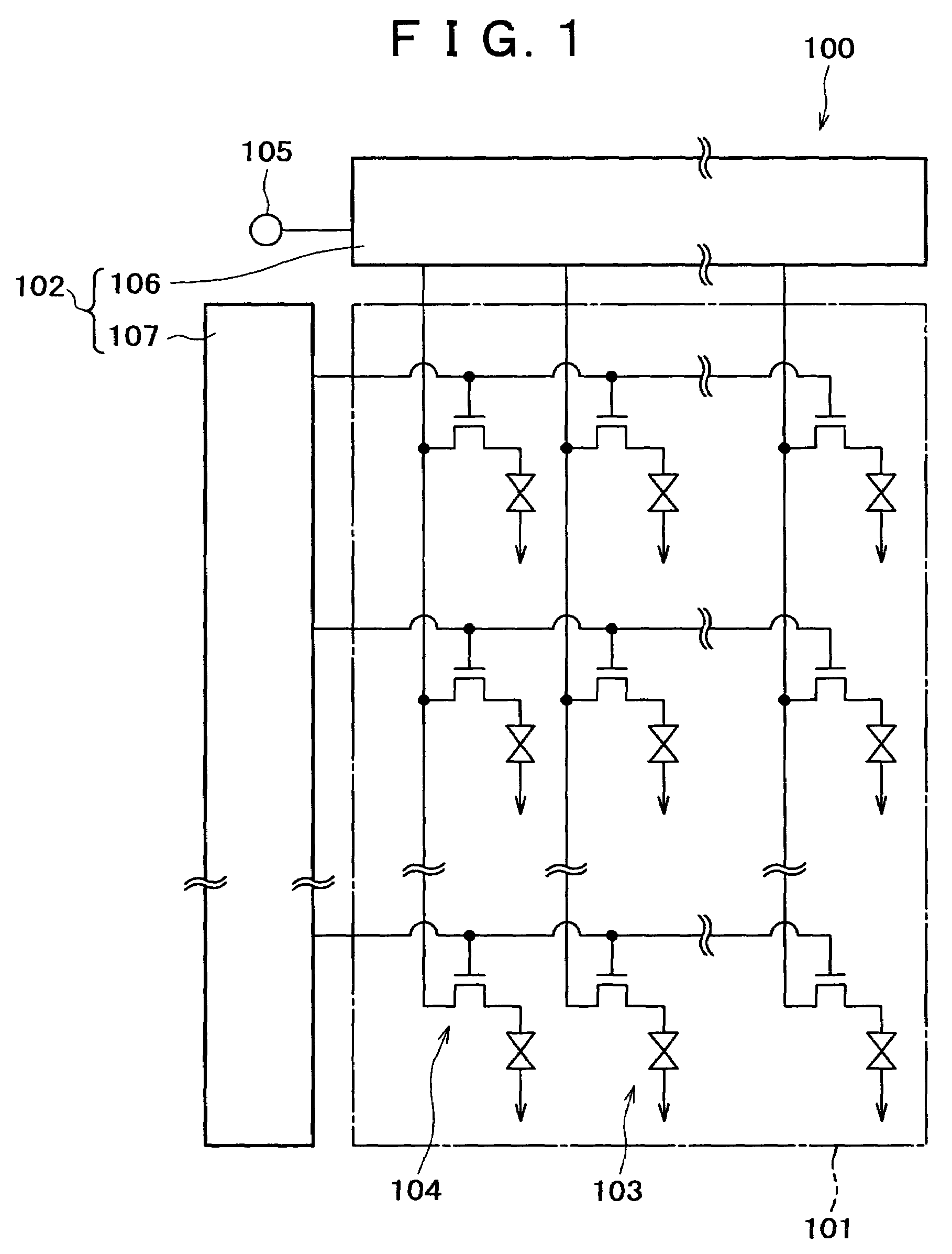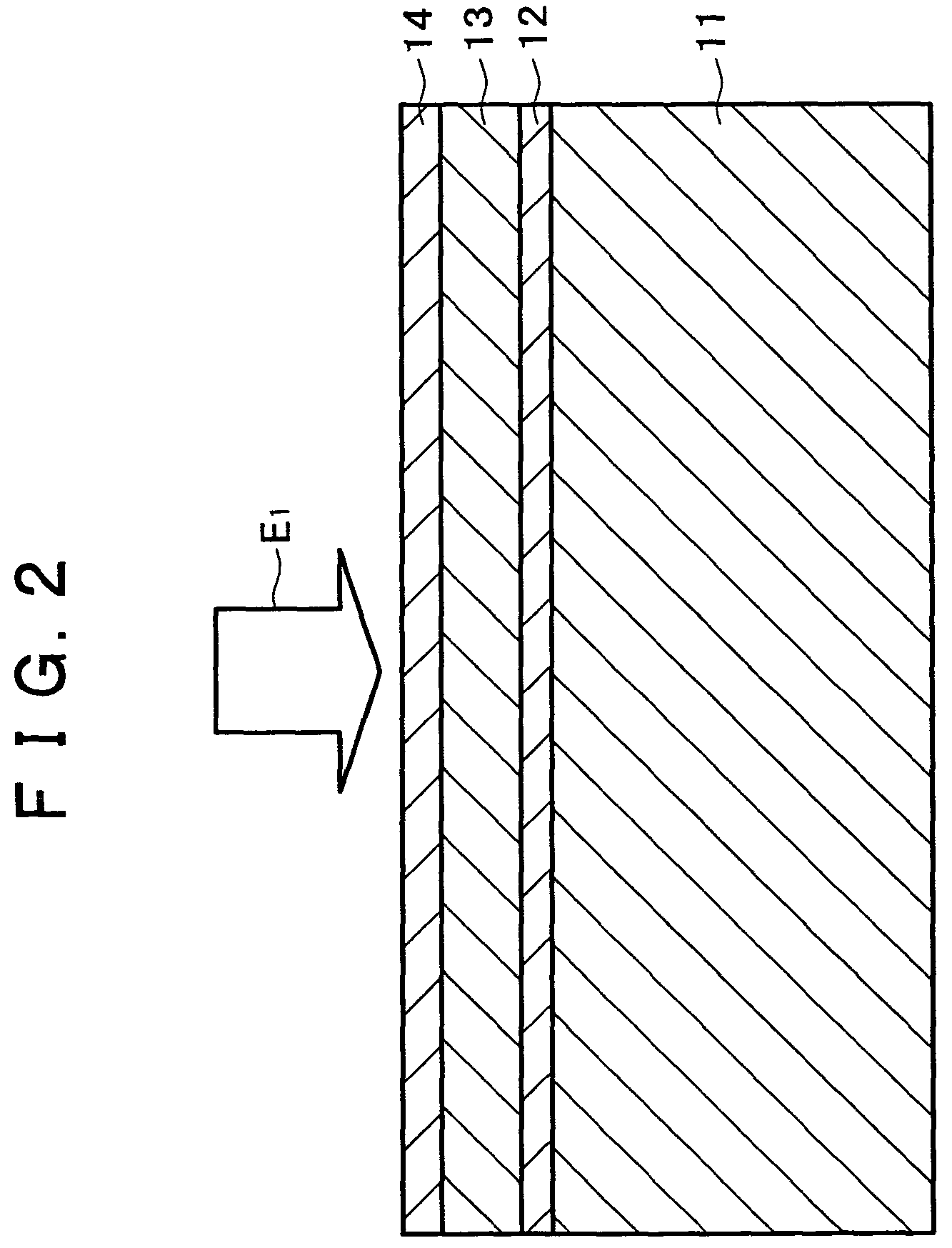Method of producing crystalline semiconductor material and method of fabricating semiconductor device
a technology of crystalline silicon and manufacturing method, which is applied in the direction of static indicating devices, instruments, crystal growth process, etc., can solve the problems of poor crystallinity of polycrystalline silicon films, uneven characteristics of tft, and very inferior characteristics of semiconductor devices such as tft using polycrystalline silicon films, so as to improve the crystallinity of the second crystalline material
- Summary
- Abstract
- Description
- Claims
- Application Information
AI Technical Summary
Benefits of technology
Problems solved by technology
Method used
Image
Examples
example
[0103]FIG. 13A is a SEM (Scanning Electron Microscope) photograph of a crystalline film obtained by the first heat-treatment under the following conditions. FIGS. 13B and 13C are EBSP (Electron Back Scattering Pattern) photographs of the crystalline film in a normal direction and a rolling direction, respectively. FIG. 14 is a graph indicating the degrees of the {100} orientations with respect to the vertical direction of a glass substrate after repetition of pulse laser irradiation by 150 times, and FIG. 15 is a graph indicating the degrees of the {100} orientations with respect to the vertical direction of the glass substrate after repetition of pulse laser irradiation by 200 times. FIG. 16 is a view illustrating the normal direction (vertical direction of the glass substrate) and the rolling direction (in-plane direction of the glass substrate) shown in FIGS. 13B and 13C.
[0104]In addition, before the SEM photograph of the crystalline film is taken, the crystalline film is subject...
PUM
| Property | Measurement | Unit |
|---|---|---|
| temperature | aaaaa | aaaaa |
| temperature | aaaaa | aaaaa |
| thickness | aaaaa | aaaaa |
Abstract
Description
Claims
Application Information
 Login to View More
Login to View More - R&D
- Intellectual Property
- Life Sciences
- Materials
- Tech Scout
- Unparalleled Data Quality
- Higher Quality Content
- 60% Fewer Hallucinations
Browse by: Latest US Patents, China's latest patents, Technical Efficacy Thesaurus, Application Domain, Technology Topic, Popular Technical Reports.
© 2025 PatSnap. All rights reserved.Legal|Privacy policy|Modern Slavery Act Transparency Statement|Sitemap|About US| Contact US: help@patsnap.com



